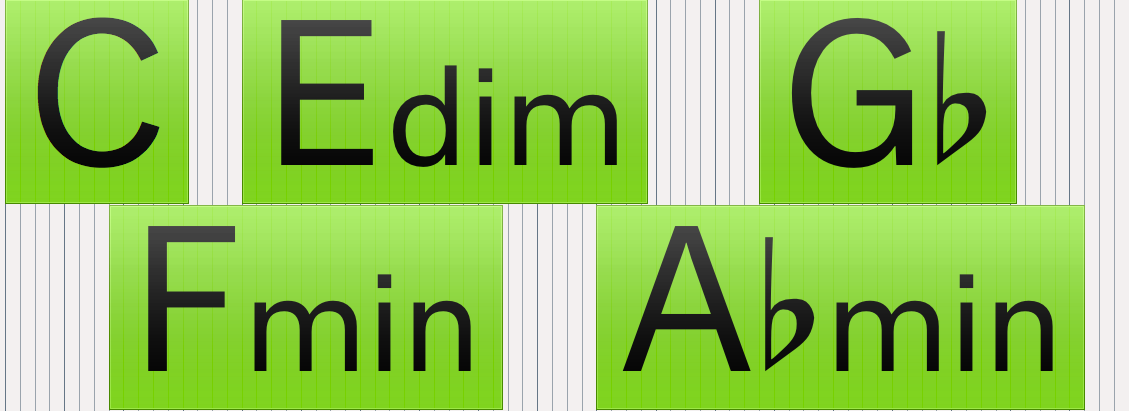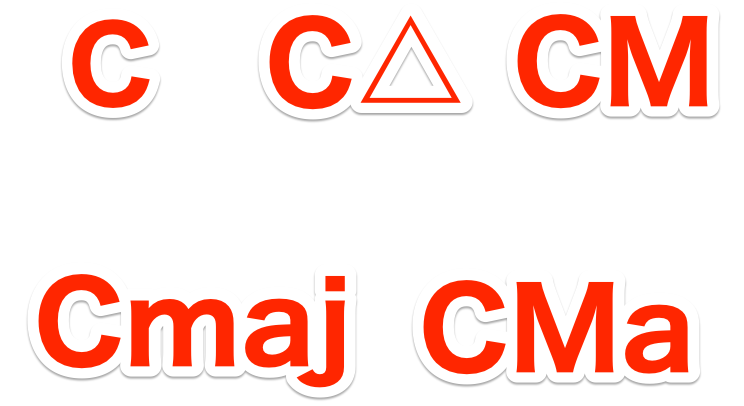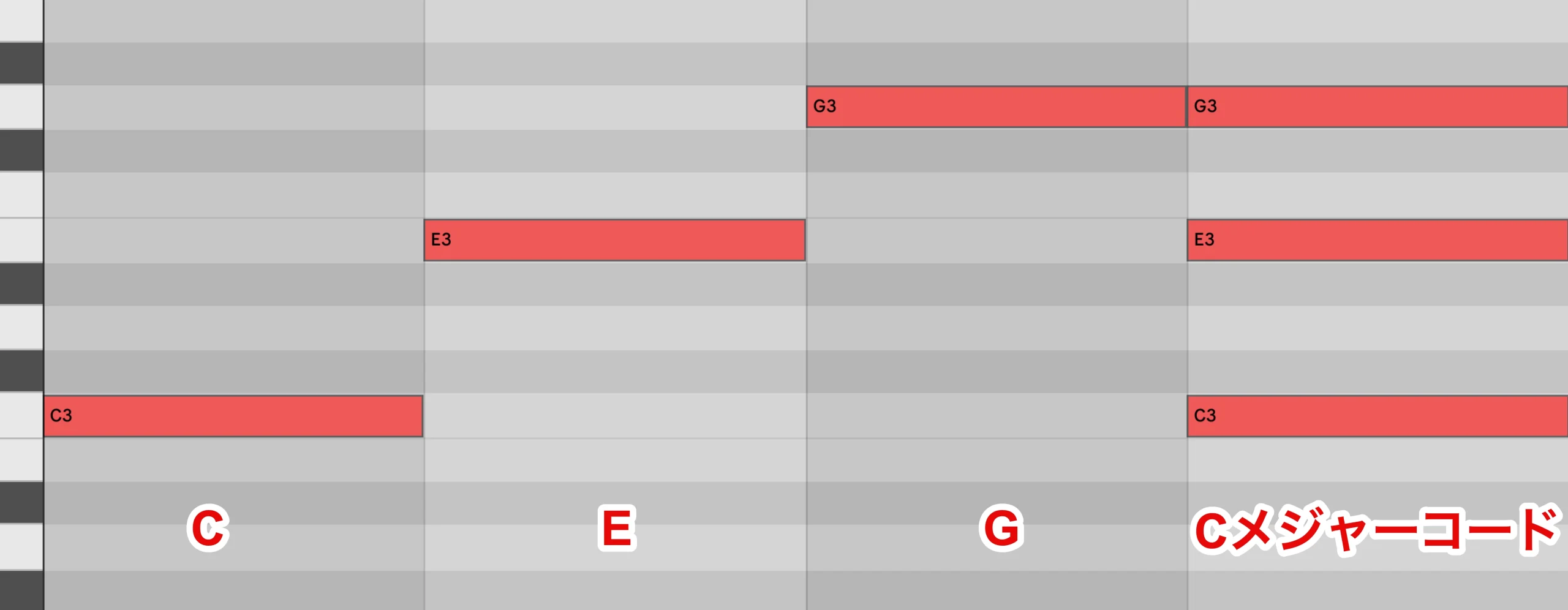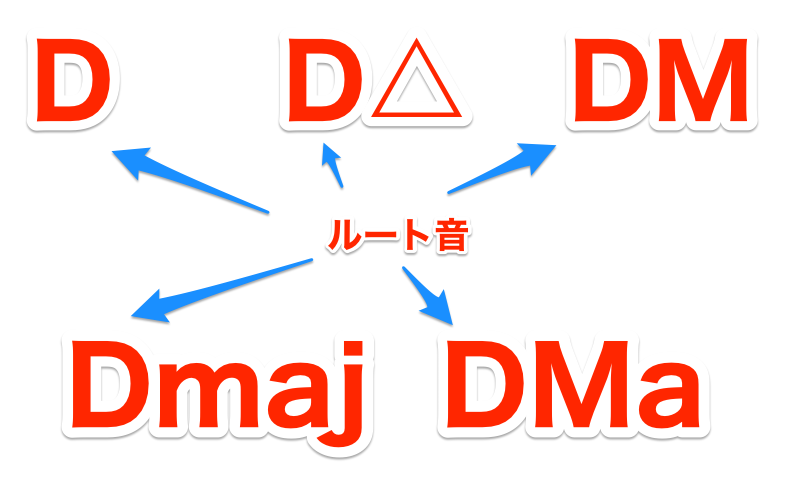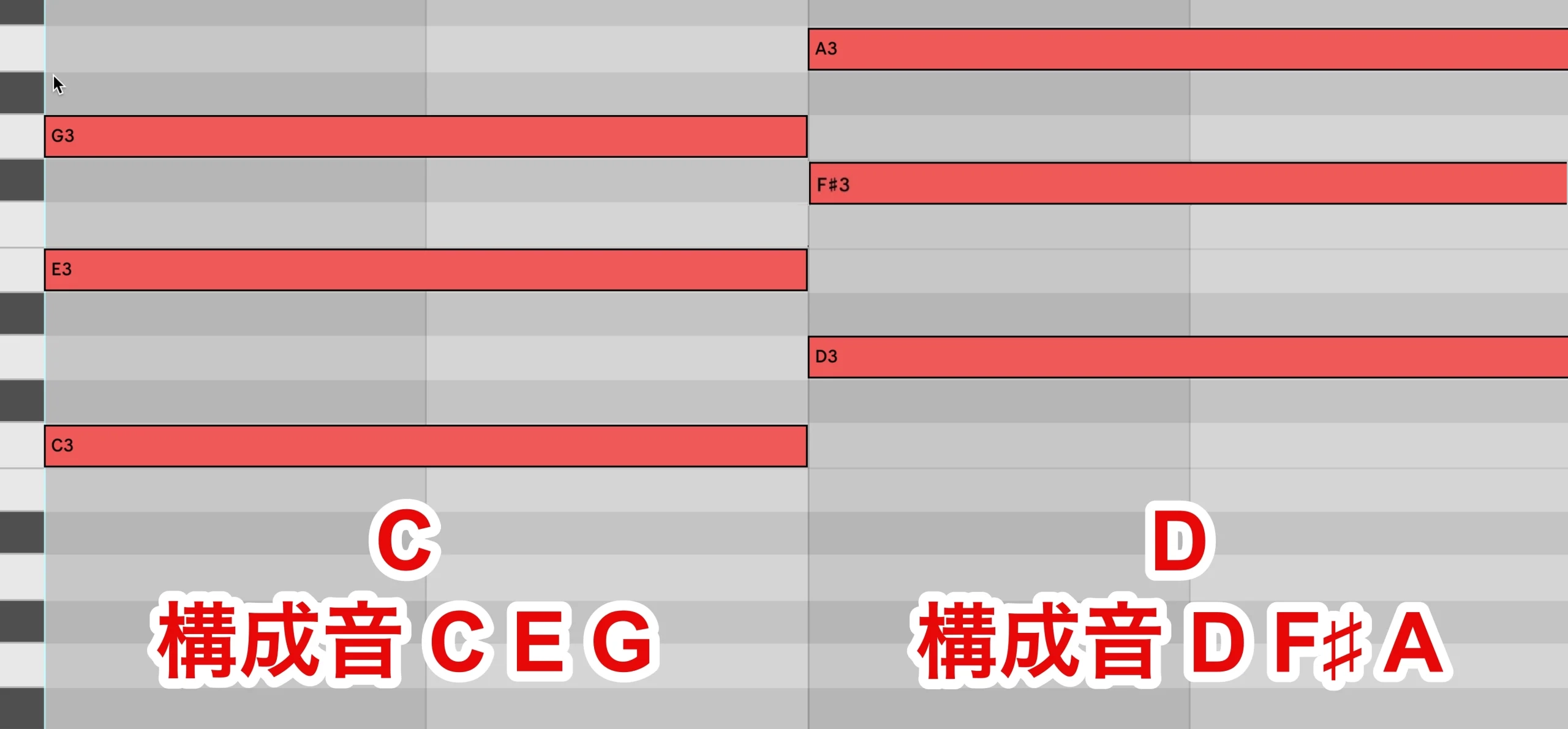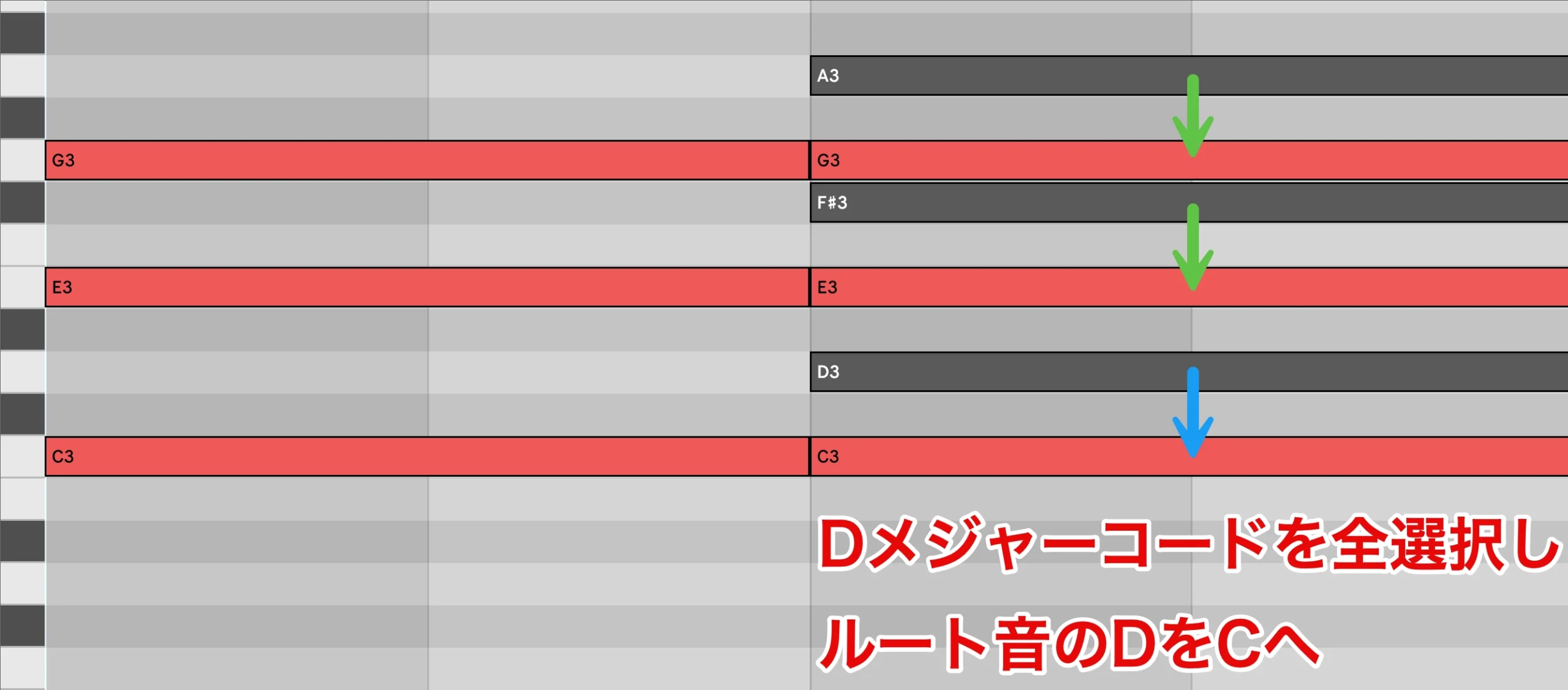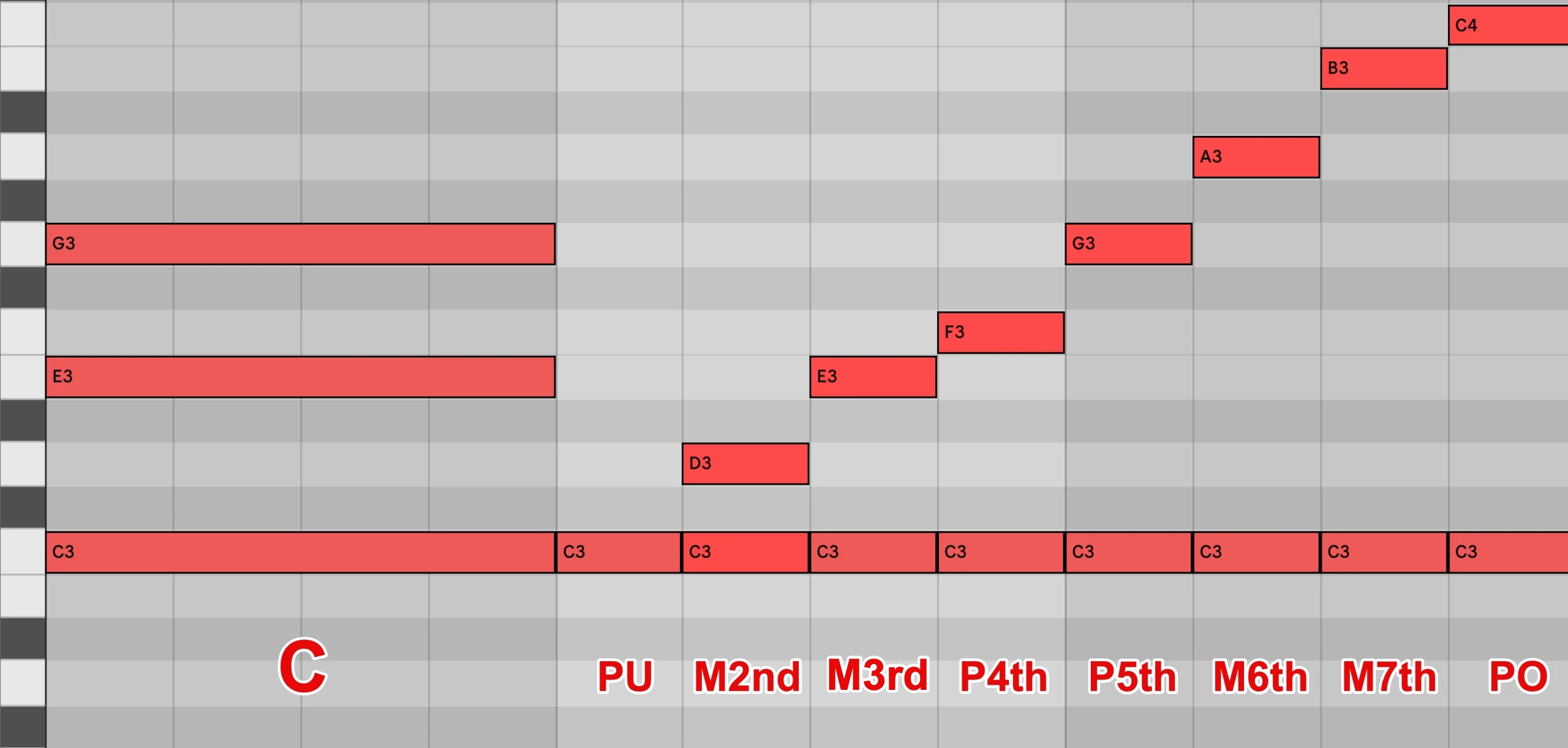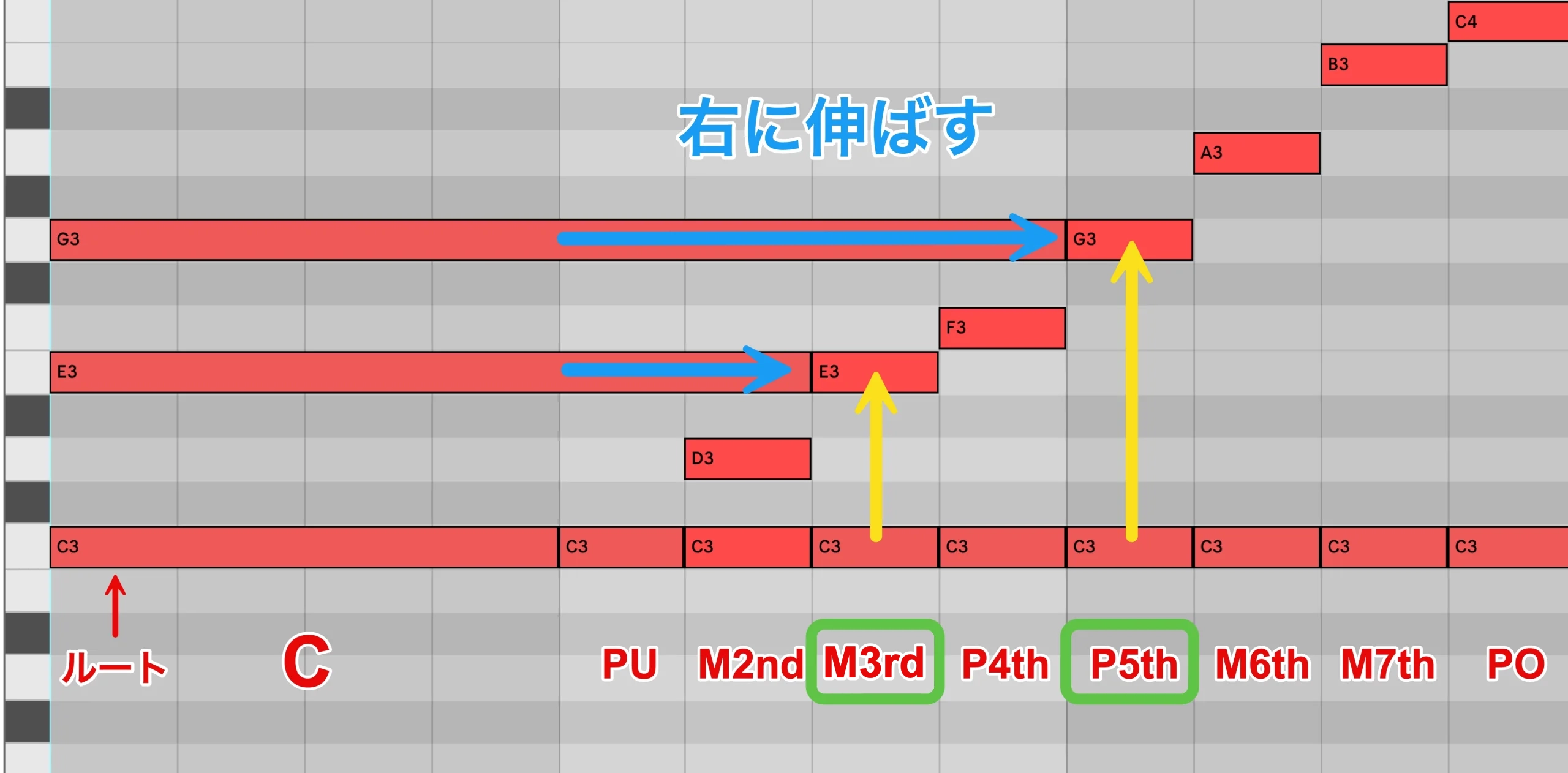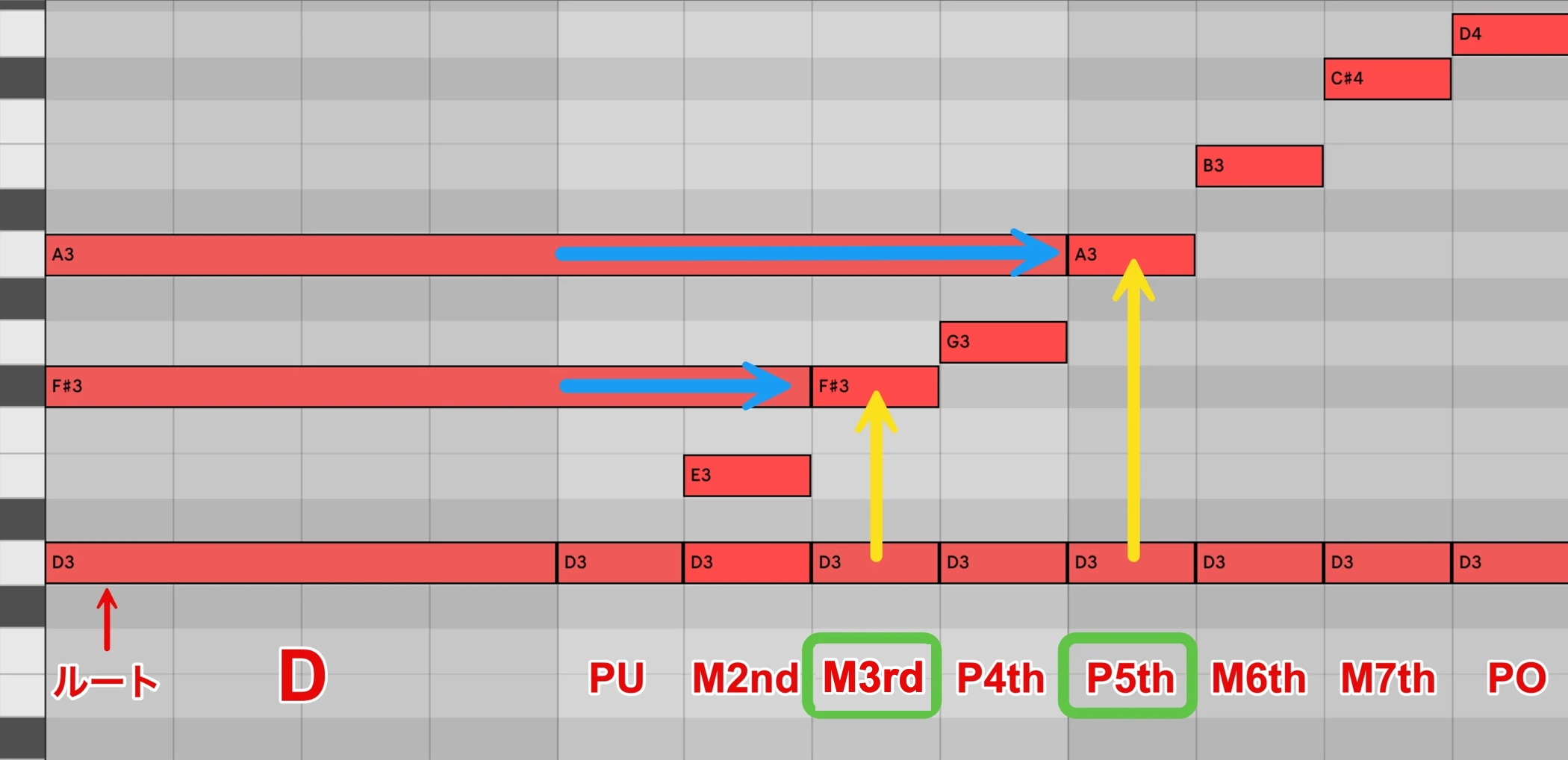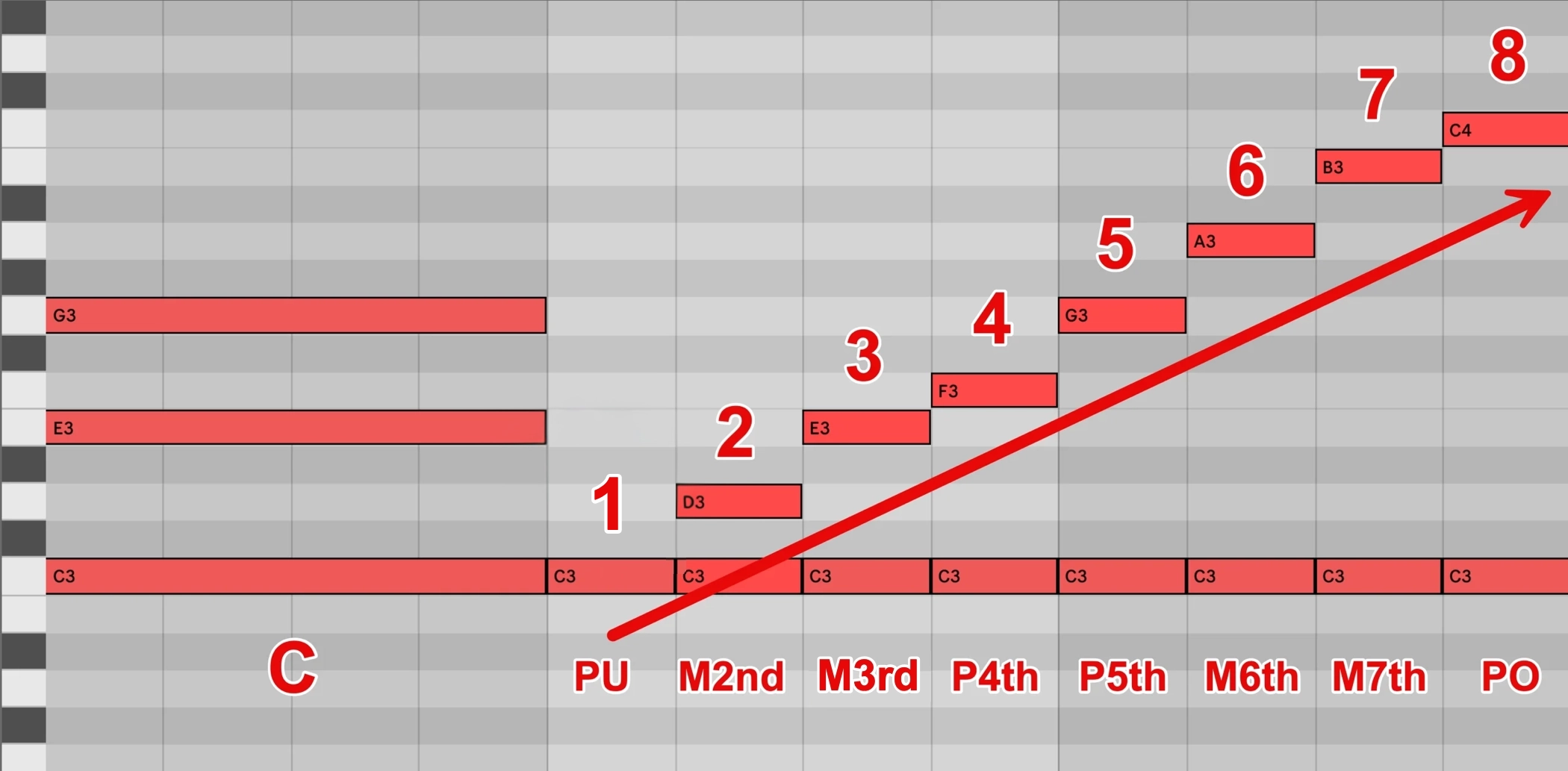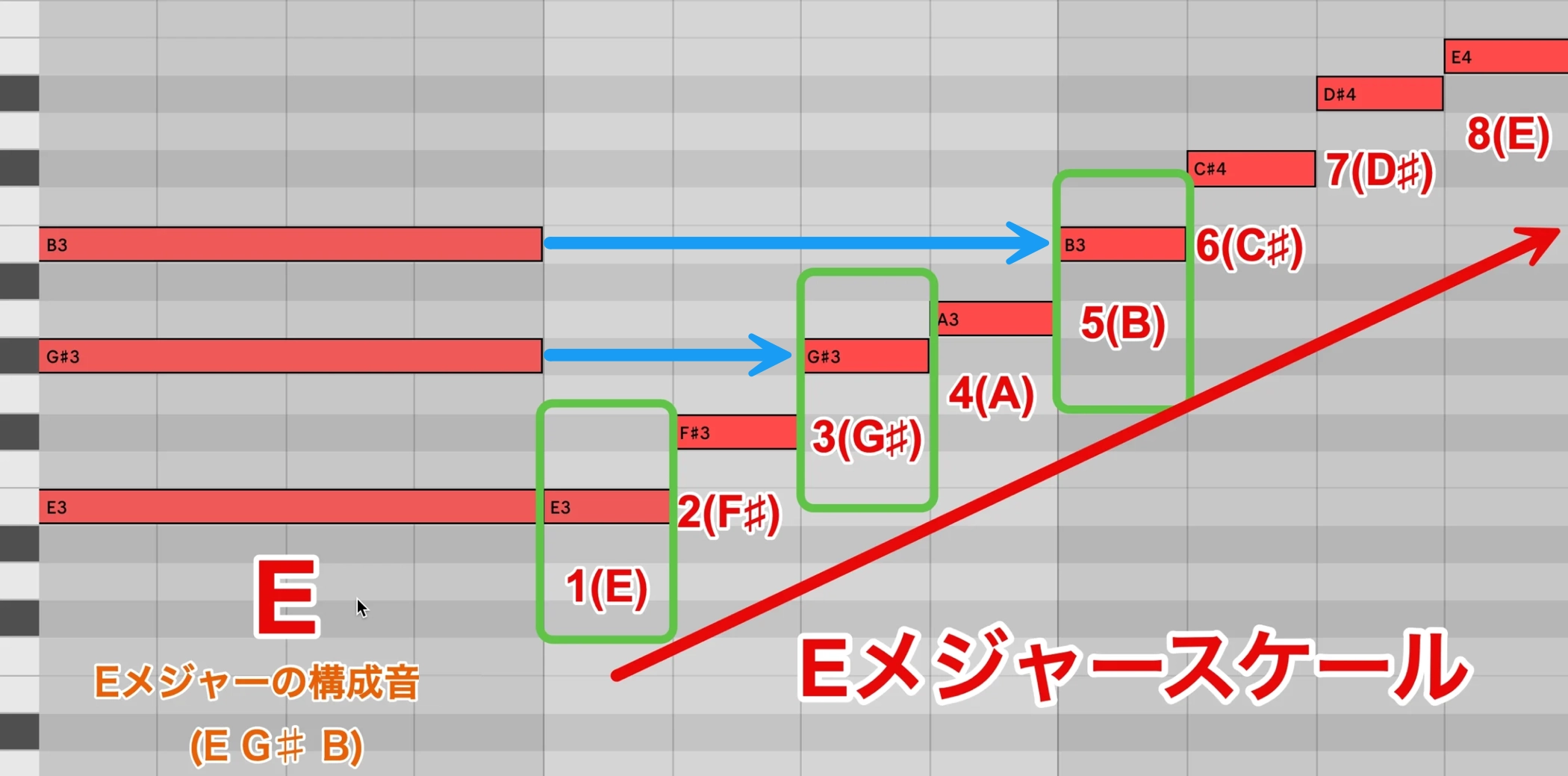三和音(トライアド)のメジャーコード/音楽理論講座
コードとは何か?その概要を把握する

ここから遂にコードについて学んでいきます。
本格的に作曲に向かっていきそうですね。
音楽理論は、各項目がどんどん繋がっていきます。
これまでのスケールやインターバルを活かすことで、様々なコードをどのように作成するのか?をスムーズにご理解いただけます。
「コード=和音」とは、高さが異なる複数の音が響いて生まれるサウンドと言われます。
インターバルを学んだ際、2音の組み合わせでも音楽的な響きは生まれていました。
しかし、これらはコードのいずれかの音が省略されたものと考えられます。
三和音で作成されるメジャーコード
まずは3つの音で出来上がる、三和音(トライアド)を確認していきましょう。
明るい響きを持つメジャーコードから確認していきます。
下記がCメジャーコードです。
※コードの構成音を鳴らした後にコードが鳴ります。
メジャーコードはこのように表記されることが多いです。
特に有名なものは
- Cメジャーコード=C
- Dメジャーコード=D
のような表記でしょうか。
譜面とピアノロールでそれぞれ確認してみましょう。
インターバルに注目する前に、ルート(根音)について学んでおきましょう。
ルートとは、和音の基礎となる音になります。
Cメジャーコードの基本形が、「C」と「E」と「G」となります。
この場合、「C」がルートとなり、その上に「E」と「G」が重なることとなります。
上記で表記したアルファベット部分は、ルート音ということですね。
Cメジャーコード
Dメジャーコード
それでは上記のDメジャーコードも確認してみましょう。
こちらも、コードの構成音を鳴らした後にコードがなります。
構成音はこちらになります。
メジャーコードの法則を探る
上記の分析で、CメジャーコードやDメジャーコードの作り方が判明しました。
しかし、全てのメジャーコードを丸覚えしなくてはならないのか?
何か法則はないのか、と思いますよね?
CメジャーコードとDメジャーコードを比較してみましょう。
Dメジャーコードを全選択後、ルート音のDをCまで動かしてみましょう。
そうすると、両方ともCメジャーコードになります。
ということは、ルートからの音の重ねる距離が同じということですね。
ここで、メジャーコードがどのようにできているのか。
ルート音にどのように重ねているのかを確認してみましょう。
Cメジャーコードの右隣にインターバルを用意しました。
Cをルートとして、その上に重ねたEとGを右に伸ばしてみましょう。
ルートCから「M3rd上」「P5th上」を積み重ねたものが、Cメジャーコードの基本形とわかります。
同じ要領で「Dメジャーコード」も確認してみましょう。
ルートDから「M3rd上」「P5th上」を積み重ねたものがDメジャーコードとわかりますね。
これはCメジャーコードも同様でした。
このことから、メジャーコードの基本形は「ルート」+「M3rd上」+「P5th上」を積み重ねたものと言えます。
ここでもう一つ、以前に学習した「スケールディグリー」でも覚えてしまいましょう。
スケールディグリーの「 1 + 3 + 5 」となります。
もし「Eメジャーコード」を作り上げたい場合、まずはEメジャースケールを考えます。
Eメジャースケールの1/3/5の音を重ねると、そのメジャーコードができるということです。
まとめます。
メジャーコードの基本形は
- インターバルで覚えるなら : 「 R + M3rd + P5th 」
✴︎ルートはRとします
- スケールディグリーで覚えるなら : 「 1 + 3 + 5 」
とてもシンプルですね。
次回は、この流れでマイナーコードを見ていきます。




